


2023-12-18
Foreword Solder joint reliability is crucial
Electronic components, which are the core of electronic products, often have to withstand harsh environmental conditions such as temperature cycles and mechanical vibration/shock. In electronic products that use surface assembly processes for interconnection, mechanical support and electrical interconnection between components and printed circuit boards are mainly achieved through solder joints. The reliability of solder joints directly affects the service life of the product. Failure and failure may cause huge losses, so it is particularly important for solder joints to operate stably, reliably and safely.
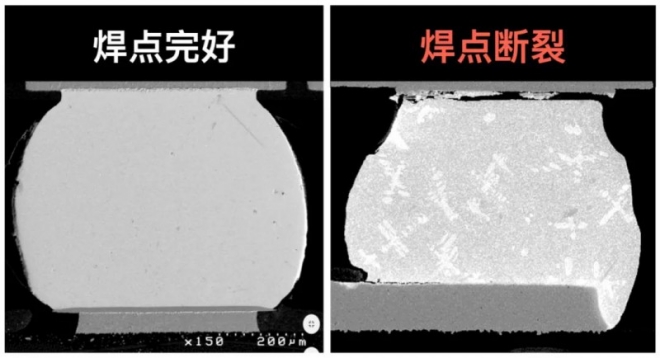
At the same time, solder joints are the weakest points within the structure of electronic components. The main symptom of solder joint interconnection failure is cracking of solder joints. Array packaged devices use bottom solder terminals to interconnect with the substrate. When the ambient temperature cycles or the power of the component itself generates heat, the thermal expansion coefficient between the component and the substrate is inconsistent. Thermal stress is generated, which in turn generates relative displacement, leading to failure of the entire component. This is also one of the main factors leading to cracking of component solder joints.
Solution: Underfill
A reliable underfill is an effective way to avoid the above phenomena. At the same time, it also plays a role in protecting solder balls and enhancing the device's drop resistance, further improving the reliability of the packaged device.
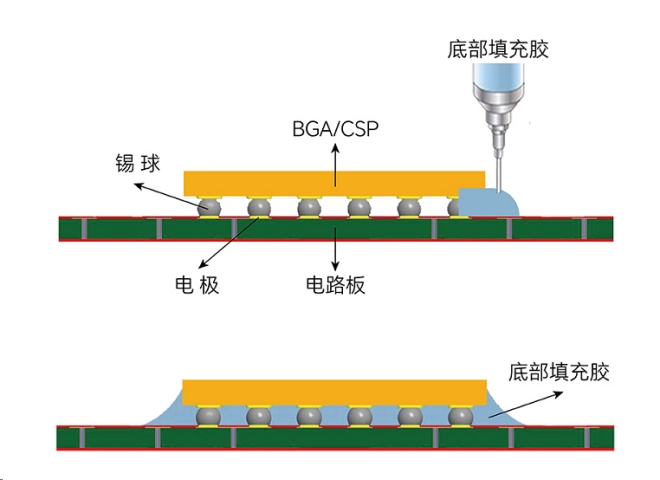
Focus on performance reliability
Solving the problem of internal stress caused by temperature changes is the original intention of the invention of underfill. Therefore, when evaluating the reliability of underfill, you should focus on the following indicators:
Coefficient of thermal expansion (CTE), glass transition temperature (Tg), modulus, curing temperature.
The requirements for thermal expansion coefficient, glass transition temperature and elastic modulus of underfill may vary depending on specific applications. Generally speaking, they should meet low thermal expansion coefficient (low CTE), high glass transition temperature (high Tg), Low modulus, low curing temperature requirements.
Youxingsha—Board-level underfill glue SHARK 1162 for the electronics industry
There is no "welding" effect due to hot and cold shocks
SHARK 1162 is a board-level underfill adhesive for the electronics industry launched by Youxingshark. It is mainly used for filling BGA and CSP chip solder joints. It is a one-component heat-cured epoxy adhesive and is a low-halogen environmentally friendly product. This product has good filling properties, reliability and reworkability, and has excellent performance in actual industrial applications.
Features and advantages
Ultra-low viscosity, good flow performance, low CTE, high Tg, low modulus, can be repaired and cleaned
Technical Parameters
Characteristics before curing
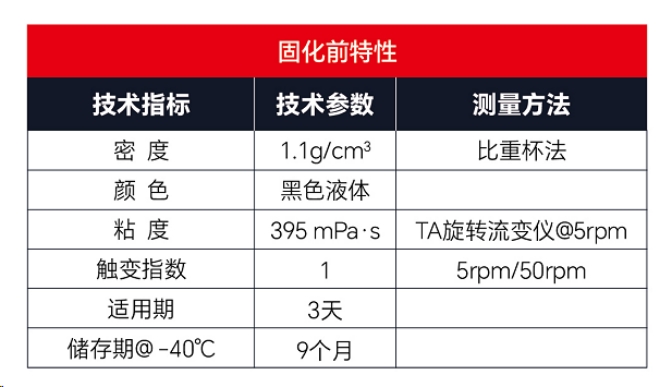
Typical Cure Properties
Recommended curing conditions: 10 min @ 130°C (can be adjusted appropriately according to customer curing equipment and oven temperature)
Curing thermal weight loss: < 1%
Cured properties
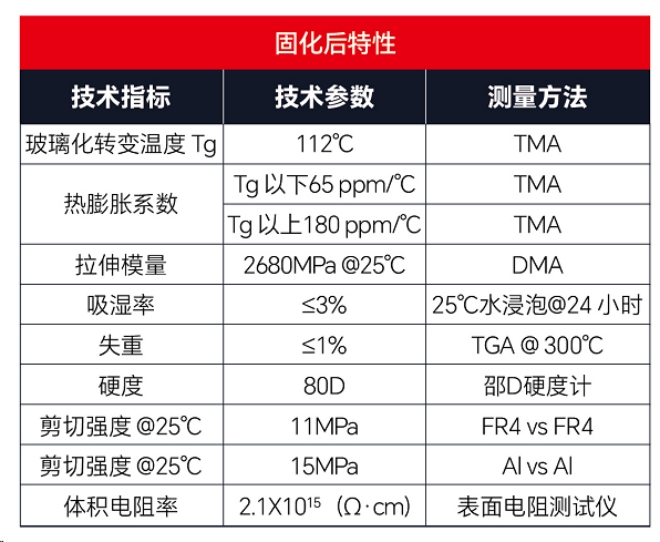
In order to verify the reliability of SHARK 1162, we will compare its relevant experimental thermal data with similar product 3808.
Product performance testing (2)
01 TMA Experiment-Thermomechanical Analysis (CTE&Tg)
Equipment: TMA450. Parameter settings: -50℃ to 180℃, heating rate 10℃/min
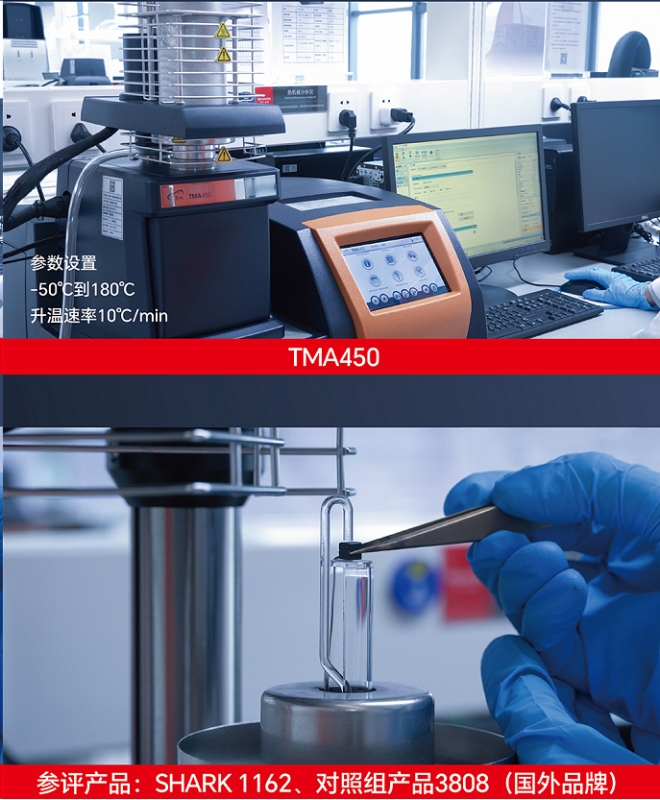
Measured:
SHARK 1162 glass transition temperature 123.44℃; glassy expansion coefficient 60.546ppm/℃, high elastic expansion coefficient 151.982ppm/℃;
The glass transition temperature of control group 3808 is 110.53℃; the glass expansion coefficient is 60.799ppm/℃, and the high elastic expansion coefficient is 154.764ppm/℃.
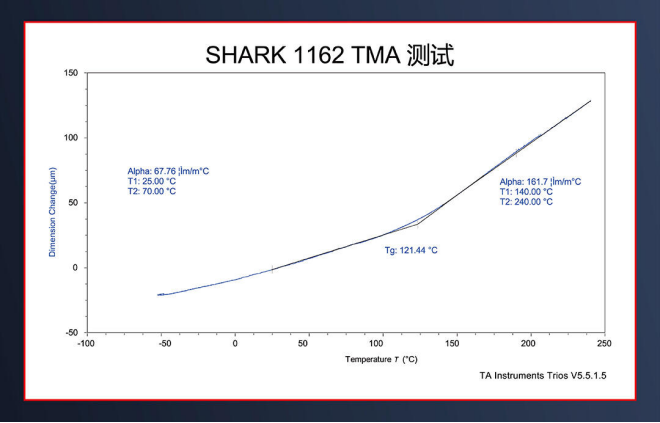
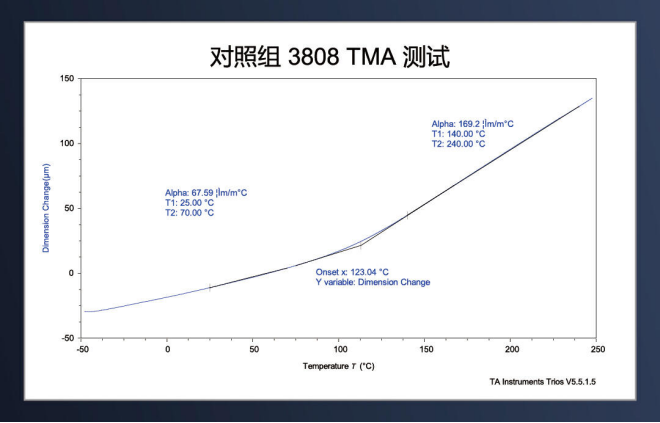
Experimental results
The glass transition temperature (Tg) of SHARK 1162 is slightly higher than that of the control 3808, and the coefficient of thermal expansion (CTE) of the two is consistent, showing excellent heat resistance.
Interpretation: A lower coefficient of thermal expansion (CTE) indicates that the adhesive can better adapt to the thermal expansion and contraction of the material at high temperatures, thereby reducing the generation of stress. At the same time, relevant tests show that when the coefficient of thermal expansion (CTE) is low, the higher the glass transition temperature (Tg), the longer the thermal cycle fatigue life. Because of some applications in high-temperature environments, the adhesive needs to have a higher glass transition temperature (Tg) to maintain the performance and stability of the filled adhesive.
02 DMA experiment (mainly focusing on the modulus at room temperature 25°C)
Equipment: DMA850. Parameter settings: amplitude 20um, oscillation frequency 1Hz, temperature range starting from room temperature and heating at a rate of 5°C/min, focusing on modulus comparison at room temperature 25°C.
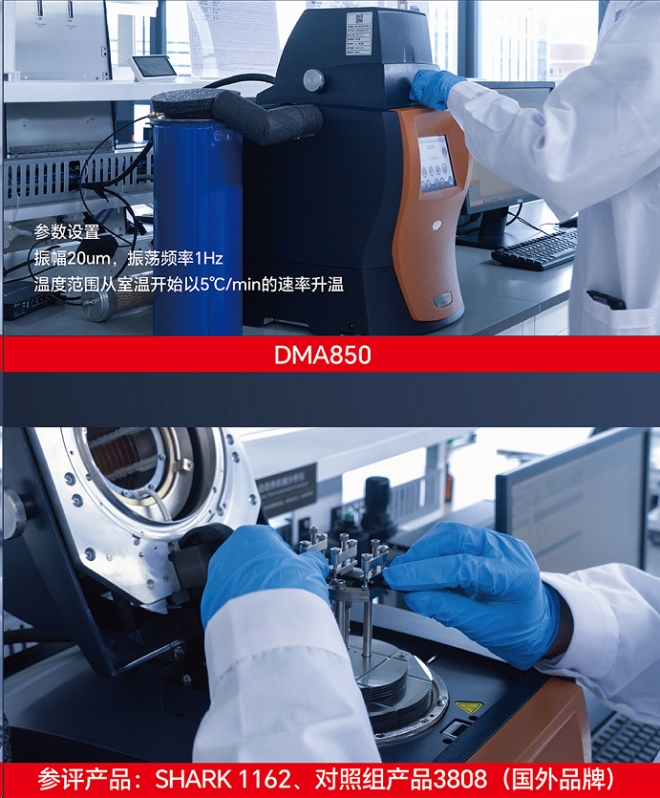
Measured:
The storage modulus of SHARK 1162 is 2569.21MPa, and the modulus at the Tg point is 1230.02MPa;
The storage modulus of the control group 3808 is 2585.37MPa, and the modulus at the Tg point is 1500.07MPa.
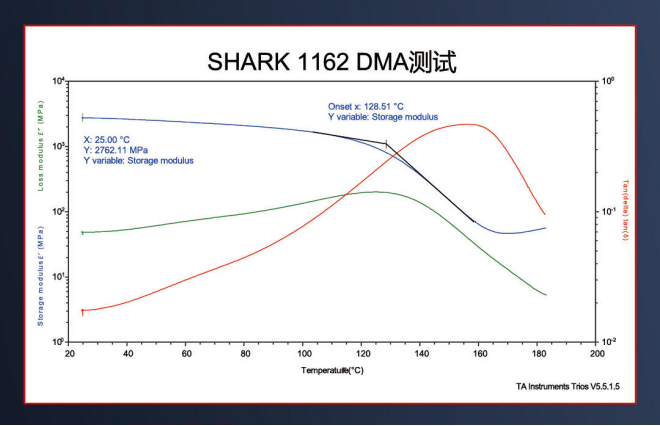
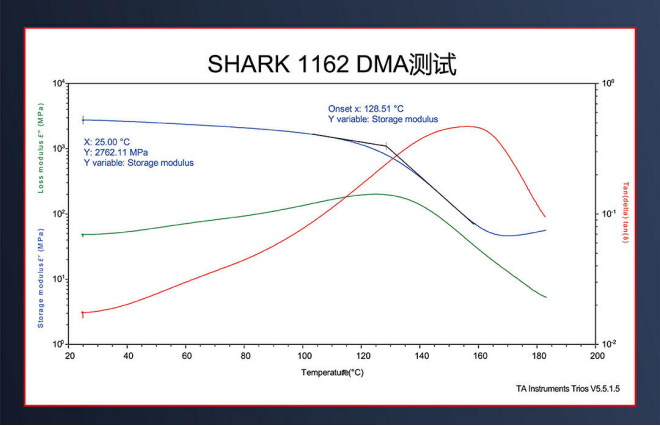
Experimental results
SHARK 1162 has a slightly lower modulus than the control group 3808, showing better toughness and impact resistance.
Interpretation: The low elastic modulus of the bottom filling rubber and a certain degree of flexibility determine the deformation degree and recovery ability of the filling rubber during the loading process. A moderate elastic modulus can prevent the interface and body of the underfill from cracking, and improve the warpage resistance and reliability of the underfill.
03 DSC experiment-differential scanning calorimeter analysis (exothermic onset and peak temperature)
Equipment: DSC25. Parameter settings: -30℃ to 200℃, heating rate 5℃/min.
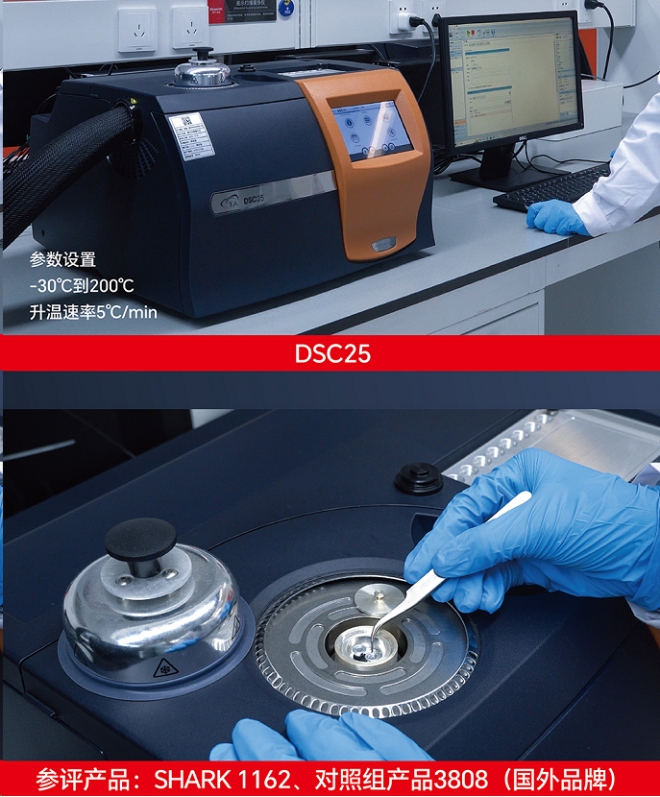
Measured:
The curing exothermic peak of SHARK 1162 appears at 121.97℃;
The curing exothermic peak of control group 3808 appeared at 116.51°C.
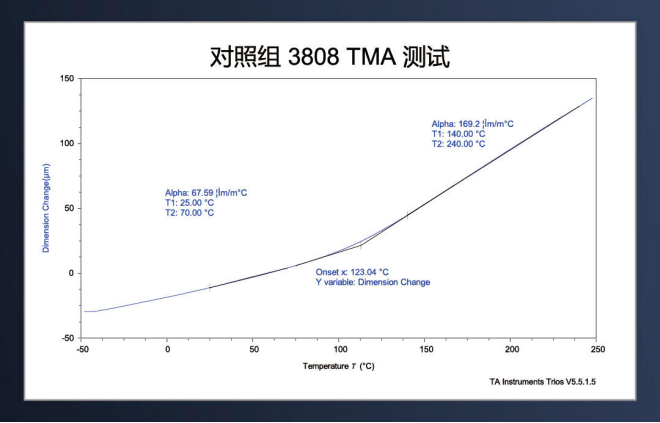
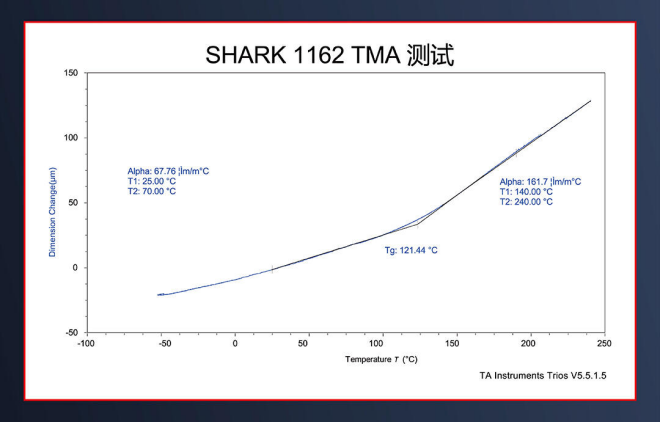
Experimental results
The heat release peaks of both are at 120°C, so the recommended curing temperature is 130°C to balance efficiency and reliability requirements.
Interpretation: The recommended curing conditions for SHARK 1162 are 130°C, 10 minutes. Lower curing temperatures can improve efficiency and reduce residual stress after curing of the underfill.
Summarize
SHARK1162 and control group 3808 showed basically the same or even better experimental results. SHARK1162 has the characteristics of low thermal expansion coefficient (low CTE), high glass transition temperature (high Tg), low curing temperature and low modulus. Even under extreme conditions such as high and low temperatures, SHARK1162 still maintains good performance and stability, and has high reliability.
It should be noted that the performance of underfill is also affected by specific application scenarios, such as environmental factors (such as temperature, humidity, etc.), usage conditions (such as shock, vibration, etc.), and sizing processes. Therefore, when selecting underfill, comprehensive consideration and evaluation should be carried out based on the specific situation.